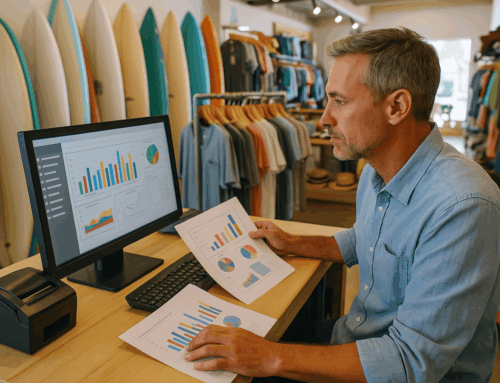Opening a bar can be an exciting and profitable venture, but it requires careful planning, industry knowledge, and a solid financial strategy. From choosing the right location to obtaining licenses and managing daily operations, every step must be carefully executed. This guide provides an in-depth look at how to open a bar, covering all aspects including costs, essential equipment, staffing, marketing, financing, and the role of POS software in running a smooth operation.
1. Business Planning & Licensing
Creating a Bar Business Plan
A well-structured business plan is crucial for securing financing, obtaining necessary permits, and ensuring smooth operations. Key sections to include:
- Concept & Theme: Will your bar be a sports bar, cocktail lounge, nightclub, or speakeasy?
- Market Research: Identify your target audience, analyze competitors, and study industry trends.
- Financial Projections: Estimate startup costs, revenue forecasts, and profit margins.
- Legal Requirements:
- Apply for a liquor license, which varies by state and local laws.
- Register your business as an LLC, Corporation, or Sole Proprietorship.
- Obtain health and safety permits.
- Secure business insurance (liability, property, and workers’ compensation).
Licensing and Permits
The process of acquiring a liquor license can be time-consuming and costly, often ranging from $1,000 to $15,000 depending on state regulations. Additional required permits may include:
- Food service permit (if serving food)
- Music and entertainment licenses (for live bands or DJs)
- Fire and occupancy permits
2. Choosing the Right Location
Finding the Best Location for Your Bar
Selecting the right location is critical to your bar’s success. Factors to consider:
- Foot Traffic & Accessibility: High-traffic areas near entertainment districts or college campuses attract more customers.
- Competition Analysis: Research nearby bars and determine how you can differentiate your business.
- Lease or Purchase: Weigh the pros and cons of renting versus buying commercial property.
- Square Footage Requirements:
- Small bar: 1,000 – 1,500 sq. ft.
- Medium bar: 1,500 – 2,500 sq. ft.
- Large bar: 3,000+ sq. ft.
3. Costs & Budgeting
How Much Does It Cost to Open a Bar?
The cost of opening a bar depends on the location, size, and concept. Below is a breakdown of estimated costs:
Initial Investment Costs:
| Expense Type | Estimated Cost ($) |
|---|---|
| Rent & Leasehold Improvements | $20,000 – $100,000 |
| Licenses & Permits | $5,000 – $50,000 |
| Equipment & Furniture | $25,000 – $75,000 |
| Initial Inventory | $10,000 – $50,000 |
| POS Software & System | $2,500 – $10,000 |
| Marketing & Branding | $5,000 – $15,000 |
| Total Estimated Costs | $75,000 – $300,000 |
Ongoing Costs:
- Rent & Utilities: $5,000 – $15,000/month
- Employee Payroll: $15,000 – $50,000/month
- Inventory Restocking: $5,000 – $25,000/month
- Marketing & Advertising: $1,000 – $5,000/month
Hidden Costs to Consider
- Delays in licensing approval
- Renovations & unexpected repairs
- Employee turnover & training costs
- Liquor spoilage & theft prevention
4. Equipment, Tools & Inventory
Essential Bar Equipment:
- Bar setup: Refrigeration, ice machines, beer taps, and liquor dispensers
- POS Software: Essential for managing sales, inventory, and customer engagement
- Glassware & Bar Tools: Cocktail shakers, mixing spoons, jiggers, and strainers
- Security Systems: ID scanners, cameras, and alarm systems
Initial Inventory:
- Alcohol selection: Spirits, beer, wine, and mixers
- Garnishes: Lemons, limes, cherries, and olives
- Cleaning & sanitation supplies
5. Staffing & Payroll Costs
Common Job Roles & Salaries:
| Position | Avg. Salary ($/Year) |
| Bartender | $25,000 – $60,000 |
| Barback | $18,000 – $35,000 |
| Server | $20,000 – $50,000 |
| Security | $25,000 – $50,000 |
| Manager | $40,000 – $80,000 |
Employee Training & Certifications
- TIPS Certification (responsible alcohol service)
- Food Handling Certification
- POS software training for efficient service
6. Bar Software & Bar Technology
Why POS Software is Essential for Bars
A POS software system streamlines operations, tracks sales, and manages customer orders.
Key Features to Look for in a Bar POS System:
- Tab Management & Split Billing
- Liquor Inventory Tracking
- Employee Scheduling & Payroll Integration
- Mobile Ordering & Digital Payments
- Data Analytics & Reporting
7. Marketing & Advertising
How to Attract Customers to Your Bar
- Social Media Marketing: Engage customers on Instagram, Facebook, and TikTok
- SEO & Google My Business Optimization
- Grand Opening Promotions: Free drinks, live music, and giveaways
- Loyalty Programs & Email Marketing
8. Funding & Financing Options
Ways to Fund Your Bar Startup
- SBA Loans & Business Loans
- Crowdfunding Platforms (Kickstarter, GoFundMe)
- Private Investors & Partnerships
- Small Business Grants & Local Funding Programs
9. Daily Operations & Success Strategies
Using POS Data to Improve Bar Operations
- Monitor peak hours to optimize staffing
- Track best-selling drinks to refine inventory
- Use analytics for targeted marketing campaigns
Conclusion
Opening a bar requires careful planning, financial discipline, and strategic marketing. With the right location, well-trained staff, and an efficient POS software system, you can create a profitable and well-managed establishment. Whether you’re launching a small lounge or a high-energy nightclub, following this guide will help set you up for long-term success.
Ready to start your bar business? Investing in a top-quality POS software system will help streamline operations, boost efficiency, and enhance customer experience.






